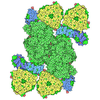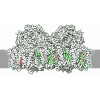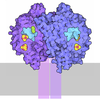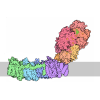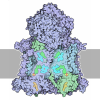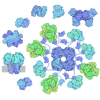+ Open data
Open data
- Basic information
Basic information
| Entry | Database: PDB / ID: 8z11 | ||||||
|---|---|---|---|---|---|---|---|
| Title | Cryo-EM structure of haptophyte photosystem I | ||||||
 Components Components |
| ||||||
 Keywords Keywords | PHOTOSYNTHESIS / Haptophyte / Photosystem I / evolution | ||||||
| Function / homology |  Function and homology information Function and homology informationphotosystem I reaction center / photosystem I / photosynthetic electron transport in photosystem I / photosystem I / chlorophyll binding / chloroplast thylakoid membrane / photosynthesis / chloroplast / 4 iron, 4 sulfur cluster binding / oxidoreductase activity ...photosystem I reaction center / photosystem I / photosynthetic electron transport in photosystem I / photosystem I / chlorophyll binding / chloroplast thylakoid membrane / photosynthesis / chloroplast / 4 iron, 4 sulfur cluster binding / oxidoreductase activity / electron transfer activity / magnesium ion binding / metal ion binding Similarity search - Function | ||||||
| Biological species |  Isochrysis galbana (eukaryote) Isochrysis galbana (eukaryote) | ||||||
| Method | ELECTRON MICROSCOPY / single particle reconstruction / cryo EM / Resolution: 2.74 Å | ||||||
 Authors Authors | He, F.Y. / Zhao, L.S. / Li, K. / Zhang, Y.Z. / Liu, L.N. | ||||||
| Funding support |  China, 1items China, 1items
| ||||||
 Citation Citation |  Journal: Proc Natl Acad Sci U S A / Year: 2024 Journal: Proc Natl Acad Sci U S A / Year: 2024Title: Structural insights into the assembly and energy transfer of haptophyte photosystem I-light-harvesting supercomplex. Authors: Fei-Yu He / Long-Sheng Zhao / Xin-Xiao Qu / Kang Li / Jian-Ping Guo / Fang Zhao / Ning Wang / Bing-Yue Qin / Xiu-Lan Chen / Jun Gao / Lu-Ning Liu / Yu-Zhong Zhang /   Abstract: Haptophyta represents a major taxonomic group, with plastids derived from the primary plastids of red algae. Here, we elucidated the cryoelectron microscopy structure of the photosystem I-light- ...Haptophyta represents a major taxonomic group, with plastids derived from the primary plastids of red algae. Here, we elucidated the cryoelectron microscopy structure of the photosystem I-light-harvesting complex I (PSI-LHCI) supercomplex from the haptophyte . The PSI core comprises 12 subunits, which have evolved differently from red algae and cryptophytes by losing the PsaO subunit while incorporating the PsaK subunit, which is absent in diatoms and dinoflagellates. The PSI core is encircled by 22 fucoxanthin-chlorophyll /-binding light-harvesting antenna proteins (iFCPIs) that form a trilayered antenna arrangement. Moreover, a pigment-binding subunit, L, which has not been identified in any other previously characterized PSI-LHCI supercomplexes, was determined in PSI-iFCPI, presumably facilitating the interactions and energy transfer between peripheral iFCPIs and the PSI core. Calculation of excitation energy transfer rates by computational simulations revealed that the intricate pigment network formed within PSI-iFCPI ensures efficient transfer of excitation energy. Overall, our study provides a solid structural foundation for understanding the light-harvesting and energy transfer mechanisms in haptophyte PSI-iFCPI and provides insights into the evolution and structural variations of red-lineage PSI-LHCIs. | ||||||
| History |
|
- Structure visualization
Structure visualization
| Structure viewer | Molecule:  Molmil Molmil Jmol/JSmol Jmol/JSmol |
|---|
- Downloads & links
Downloads & links
- Download
Download
| PDBx/mmCIF format |  8z11.cif.gz 8z11.cif.gz | 1.6 MB | Display |  PDBx/mmCIF format PDBx/mmCIF format |
|---|---|---|---|---|
| PDB format |  pdb8z11.ent.gz pdb8z11.ent.gz | 1.4 MB | Display |  PDB format PDB format |
| PDBx/mmJSON format |  8z11.json.gz 8z11.json.gz | Tree view |  PDBx/mmJSON format PDBx/mmJSON format | |
| Others |  Other downloads Other downloads |
-Validation report
| Summary document |  8z11_validation.pdf.gz 8z11_validation.pdf.gz | 26.5 MB | Display |  wwPDB validaton report wwPDB validaton report |
|---|---|---|---|---|
| Full document |  8z11_full_validation.pdf.gz 8z11_full_validation.pdf.gz | 27.5 MB | Display | |
| Data in XML |  8z11_validation.xml.gz 8z11_validation.xml.gz | 312.8 KB | Display | |
| Data in CIF |  8z11_validation.cif.gz 8z11_validation.cif.gz | 380.5 KB | Display | |
| Arichive directory |  https://data.pdbj.org/pub/pdb/validation_reports/z1/8z11 https://data.pdbj.org/pub/pdb/validation_reports/z1/8z11 ftp://data.pdbj.org/pub/pdb/validation_reports/z1/8z11 ftp://data.pdbj.org/pub/pdb/validation_reports/z1/8z11 | HTTPS FTP |
-Related structure data
| Related structure data |  39717MC M: map data used to model this data C: citing same article ( |
|---|---|
| Similar structure data | Similarity search - Function & homology  F&H Search F&H Search |
- Links
Links
- Assembly
Assembly
| Deposited unit | 
|
|---|---|
| 1 |
|
- Components
Components
+Protein , 23 types, 27 molecules ABCDEFGHIJKLMPWNORTQSUVcekr
-Photosystem I P700 chlorophyll a apoprotein ... , 2 types, 2 molecules ab
| #20: Protein | Mass: 83558.156 Da / Num. of mol.: 1 / Source method: isolated from a natural source / Source: (natural)  Isochrysis galbana (eukaryote) / References: UniProt: A0A7D4XMT1, photosystem I Isochrysis galbana (eukaryote) / References: UniProt: A0A7D4XMT1, photosystem I |
|---|---|
| #21: Protein | Mass: 82181.125 Da / Num. of mol.: 1 / Source method: isolated from a natural source / Source: (natural)  Isochrysis galbana (eukaryote) / References: UniProt: A0A7D4X9X4, photosystem I Isochrysis galbana (eukaryote) / References: UniProt: A0A7D4X9X4, photosystem I |
-Photosystem I reaction center subunit ... , 6 types, 6 molecules dfijlm
| #23: Protein | Mass: 15882.163 Da / Num. of mol.: 1 / Source method: isolated from a natural source / Source: (natural)  Isochrysis galbana (eukaryote) / References: UniProt: A0A7D4XG42 Isochrysis galbana (eukaryote) / References: UniProt: A0A7D4XG42 |
|---|---|
| #25: Protein | Mass: 20218.377 Da / Num. of mol.: 1 / Source method: isolated from a natural source / Source: (natural)  Isochrysis galbana (eukaryote) / References: UniProt: A0A7D4XMU0 Isochrysis galbana (eukaryote) / References: UniProt: A0A7D4XMU0 |
| #26: Protein/peptide | Mass: 3943.707 Da / Num. of mol.: 1 / Source method: isolated from a natural source / Source: (natural)  Isochrysis galbana (eukaryote) / References: UniProt: A0A7D4X9U5 Isochrysis galbana (eukaryote) / References: UniProt: A0A7D4X9U5 |
| #27: Protein/peptide | Mass: 4506.288 Da / Num. of mol.: 1 / Source method: isolated from a natural source / Source: (natural)  Isochrysis galbana (eukaryote) / References: UniProt: A0A7D4X9Y3 Isochrysis galbana (eukaryote) / References: UniProt: A0A7D4X9Y3 |
| #29: Protein | Mass: 15477.796 Da / Num. of mol.: 1 / Source method: isolated from a natural source / Source: (natural)  Isochrysis galbana (eukaryote) / References: UniProt: A0A7D5B6G5 Isochrysis galbana (eukaryote) / References: UniProt: A0A7D5B6G5 |
| #30: Protein/peptide | Mass: 3149.833 Da / Num. of mol.: 1 / Source method: isolated from a natural source / Source: (natural)  Isochrysis galbana (eukaryote) / References: UniProt: A0A7D4XMW6 Isochrysis galbana (eukaryote) / References: UniProt: A0A7D4XMW6 |
-Sugars , 2 types, 7 molecules 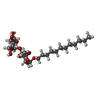
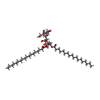

| #38: Sugar | ChemComp-LMU / #40: Sugar | |
|---|
-Non-polymers , 10 types, 510 molecules 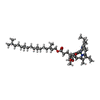


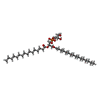
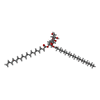
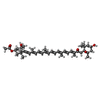
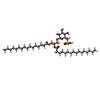
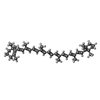
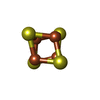
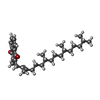









| #32: Chemical | ChemComp-CLA / #33: Chemical | ChemComp-KC2 / #34: Chemical | ChemComp-DD6 / ( #35: Chemical | ChemComp-LHG / #36: Chemical | ChemComp-LMG / #37: Chemical | ChemComp-A86 / ( #39: Chemical | #41: Chemical | ChemComp-BCR / #42: Chemical | #43: Chemical | |
|---|
-Details
| Has ligand of interest | Y |
|---|---|
| Has protein modification | Y |
-Experimental details
-Experiment
| Experiment | Method: ELECTRON MICROSCOPY |
|---|---|
| EM experiment | Aggregation state: PARTICLE / 3D reconstruction method: single particle reconstruction |
- Sample preparation
Sample preparation
| Component | Name: Photosystem I of haptophyte / Type: COMPLEX / Entity ID: #1-#31 / Source: NATURAL |
|---|---|
| Molecular weight | Experimental value: NO |
| Source (natural) | Organism:  Isochrysis galbana (eukaryote) Isochrysis galbana (eukaryote) |
| Buffer solution | pH: 6.5 |
| Specimen | Embedding applied: NO / Shadowing applied: NO / Staining applied: NO / Vitrification applied: YES |
| Vitrification | Cryogen name: ETHANE |
- Electron microscopy imaging
Electron microscopy imaging
| Experimental equipment |  Model: Tecnai F30 / Image courtesy: FEI Company |
|---|---|
| Microscopy | Model: FEI TECNAI F30 |
| Electron gun | Electron source:  FIELD EMISSION GUN / Accelerating voltage: 300 kV / Illumination mode: SPOT SCAN FIELD EMISSION GUN / Accelerating voltage: 300 kV / Illumination mode: SPOT SCAN |
| Electron lens | Mode: BRIGHT FIELD / Nominal defocus max: 1800 nm / Nominal defocus min: 1000 nm |
| Image recording | Electron dose: 50 e/Å2 / Film or detector model: GATAN K3 BIOQUANTUM (6k x 4k) |
- Processing
Processing
| CTF correction | Type: PHASE FLIPPING AND AMPLITUDE CORRECTION |
|---|---|
| 3D reconstruction | Resolution: 2.74 Å / Resolution method: FSC 0.143 CUT-OFF / Num. of particles: 148236 / Symmetry type: POINT |
 Movie
Movie Controller
Controller



 PDBj
PDBj